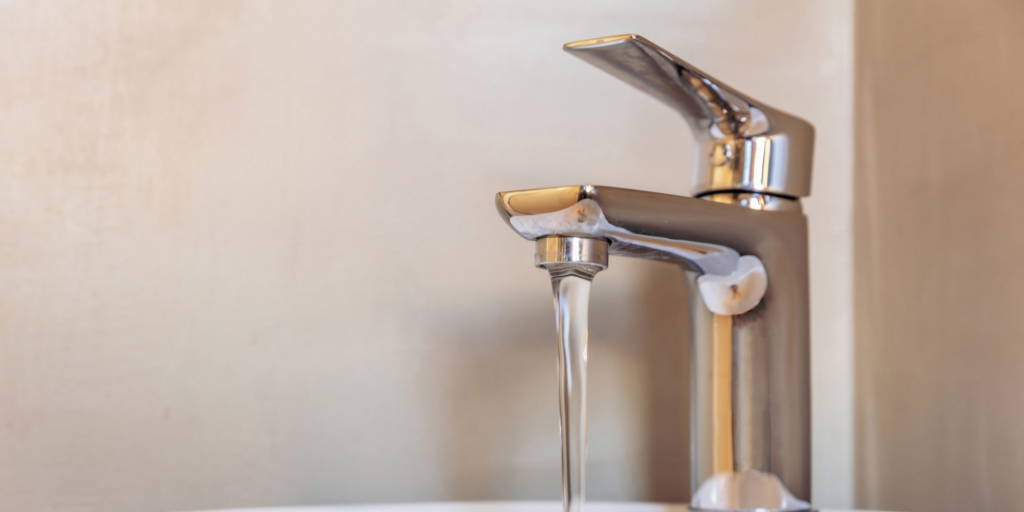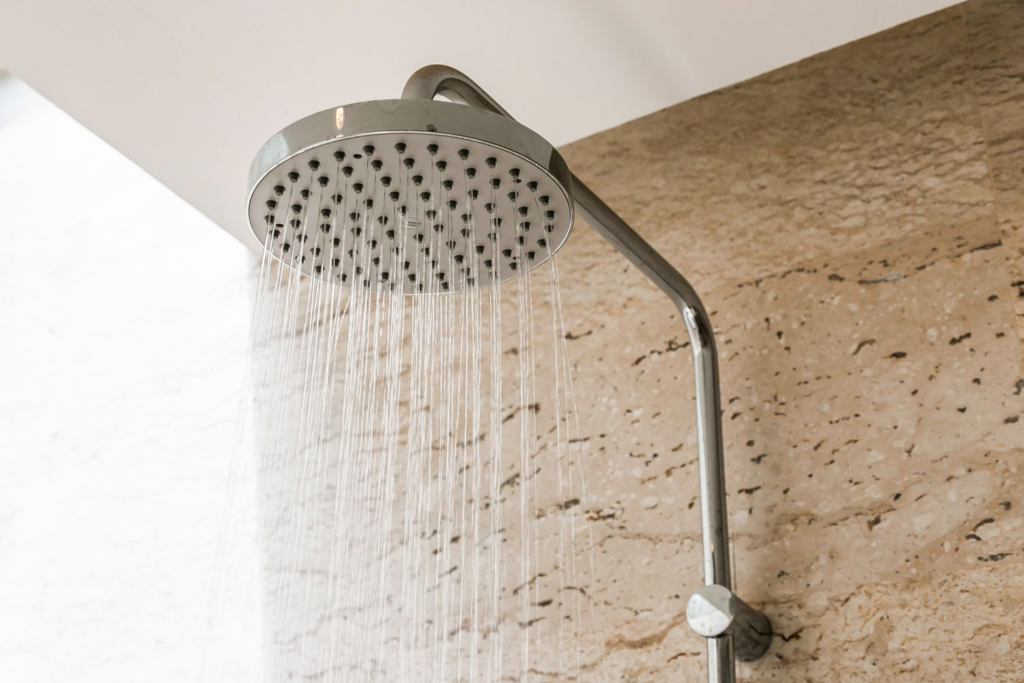Ever found yourself in your bathroom, sensing that not everything is as clean as it should be? Now is the moment to investigate further and tidy up the overlooked items. There’s no need to tolerate a grimy, bacteria-ridden space anymore. This piece will enlighten you on what requires cleaning and provide advice for swift and effective cleaning methods.
P.S. Need help to clean your bathroom quickly? We have a team of cleaning specialists who are ready to assist you. Get in touch with us to get a quote for your cleaning needs.
Table of Contents
Shower Curtains and Liners

Cleaning your shower curtains and liners is one of those downsides to having beautiful fixtures in the bathroom, but it’s an easy task that can be completed in a few simple steps. This deep cleaning will help remove any mold and mildew build up, as well as filter out any bacteria or fungus that may have taken up residence on your curtain.
Materials Needed:
- Baking soda
- Warm water
- Mild detergent
- Small scrub brush or old toothbrush
- Bleach (optional)
Instructions:
- Mix equal parts baking soda and warm water in a bowl until it’s a thick paste-like substance.
- Apply the paste to the shower curtain or liner using your scrub brush or toothbrush, focusing on areas with mildew build up. Make sure to cover both sides of the curtain/liner if possible.
- Let the paste sit on your curtain for 30 minutes before rinsing with warm water; this will allow time for the baking soda to do its job and break down tough layers of mildew, dirt, and grime from your fabrics.
- If there is still some build up present, add a few drops of mild detergent to a bucket of warm water and use your brush or toothbrush again to thoroughly scrub away any remaining residue from both sides of your fabric curtains or liners.
- If necessary, use bleach to disinfect anything that remains after cleaning; 1 part bleach mixed with 10 parts cool water should do the trick! Be sure not to use too much bleach, as this can cause discoloration over time (especially on plastic).
- Once clean, hang curtains/liners back in place using waterproof hooks; this will help prevent them from easily accumulating moisture again in wet environments such as bathrooms and showers when not in use!
Toilet Brush Holder
The toilet brush holder is a surprisingly easy item to overlook when cleaning the bathroom. This next-level of hygiene can help keep germs at bay and prevent the spread of illness from person to person.
To properly clean a toilet brush holder, start by protecting your hands with gloves and remove the toilet brush from the holder. Dispose of any excess water that may be sitting in the bottom of the holder. Use a disinfectant cleaner or bleach water solution to thoroughly scrub around and under the holder, in order to kill any germs that have developed during usage. Rinse thoroughly with hot water, let dry, and then replace the toilet brush back into the holder. Make sure all parts are completely dry before putting back together so as not to cause mildew or mold growth.
In addition to cleaning your own personal toilet brush holder regularly, it is also important to remember that visitors may bring their own brushes as well and should be offered a clean holder (as most are disposable). Keeping your bathroom clean and tidy not only adds extra sparkle but also helps promote better health all around.
Exhaust Fan Cover
The exhaust fan above the bathroom vanity is one of the most commonly overlooked items in the bathroom when it comes to cleaning. That’s why it’s important to remember to clean the exhaust fan cover regularly. Not only does this help get rid of accumulated dust and debris, but it also helps keep the fan running at optimum performance.
For general cleaning, take off the exhaust fan cover and Vacuum away any dust and buildup inside it. Be sure that your vacuum is on a low setting when doing this in order to avoid damage to any internal components. Using a damp cloth, wipe down both sides of the cover to remove any remaining dirt or grime. Finally, put back on your fan cover making sure it’s tightly secured so no air escapes out from around it.
In addition to regular cleaning, consider scheduling an occasional deep clean for your exhaust fan covers or surrounding area as needed including areas such as
- ceiling fans
- light fixtures
- ductwork
in order to keep them running optimally and improve air circulation throughout your bathroom.
Faucets and Handles

When cleaning your bathroom, many people forget to pay attention to faucets and handles that can get particularly grimy over time. Faucets, in particular, should be wiped down with a cloth soaked in warm, soapy water regularly to maintain their shine and keep bacteria at bay. Handles are likewise prone to becoming dirty and covered with germs due to frequent contact. Both should be cleaned up with a soft cloth and a disinfecting all-purpose cleaner.
Be sure to pay particular attention to the area where the handle meets the faucet as this can be an overlooked source of dirt and grime buildup. It is important to also clean the underside of any knobs or buttons on your faucets or shower heads for complete coverage.
Grout and Tiles
The grout and tiles in the bathroom are two of the most neglected items when it comes to cleaning. Over time, these surfaces can become covered with dirt, mold, mildew, soap scum and other debris. To keep them looking their best, regular cleaning is required.
There are several methods for cleaning grout and tile surfaces in the bathroom. For light dirt or soap scum build-up, a warm water and mild detergent solution can be used to wipe away the debris and sanitize the area. White vinegar can be added to this solution for extra disinfecting power but should never be used on marble or natural stone surfaces as it can cause discoloration. For tougher messes such a dried-on toothpaste residue or rust deposits from metal fixtures, commercial tile cleaners and grout whiteners may be needed to remove all traces of the mess safely.
It’s important not just to clean your grout and tiles on a regular basis but also to periodically inspect them for any signs of damage or wear that might need repair work such as:
- resealing or recaulking around fixtures
- repairing or replacing cracked tiles
- replacing faulty sealants around bathtubs and showers
These minor maintenance tasks are essential for preventing further damage from occurring in the bathroom over time.
Showerhead

Your showerhead should be cleaned at least twice a year. Unscrew the showerhead from the faucet and soak it overnight in a solution of equal parts white vinegar and water. The next morning, scrub off any remaining deposits with an old toothbrush. For extra-tough buildups, try rubbing it with a paste made from baking soda and water.
Once the showerhead is thoroughly clean, reattach it to the faucet and run warm water through it for several minutes, to rinse away all of the cleaning residue. Make sure to replace any worn or corroded parts that may have been revealed beneath the buildup. Finally, check that your showerhead is securely attached before use.
Baseboards
Don’t forget to look down – baseboards are easy to overlook since they’re close to the ground. Dust first with a dry cloth and then use a slightly damp cloth and some all-purpose cleaner for tougher spots. Be sure to get into the corners and around any trim. Baseboards often get splashed with water, so if you see any discolored areas or mold, make sure that it’s cleaned thoroughly. Pay special attention if you’re in an older building that may have used lead paint because it can be hazardous.
Don’t forget doorjambs too! Wipe down the trim on both sides of the door, and give them an extra spray of all-purpose cleaner at least once every few weeks. This will also help prevent wicking action of spills onto your wood floors or carpets in other rooms.
Trash Can
It’s easy to overlook the trash can in the bathroom when you’re cleaning, but it’s one of the most important things to remember. The trash can tends to accumulate germs, dirt, and bacteria. To keep your bathroom clean, be sure to pull out the lining of your trash can and dispose of any waste inside.
You should then clean out the actual can with soapy warm water and a soft cloth or sponge and make sure no food particles are left behind. If possible, use an all-purpose cleaner to disinfect your trash can before replacing it back in its place. This simple step will help prevent any unwanted odors or bacteria from growing in your bathroom.
Medicine Cabinet
The medicine cabinet in your bathroom is filled with toiletries, medications, and it may even be a place where you store extra supplies such as band-aids and pain relievers. In order to keep this small space safe and hygienic, it’s important to give it a thorough clean every once in a while.
Start by wiping down the inside of the medicine cabinet with an antibacterial wipe or all-purpose cleaner. Make sure to remove any expired medications or toiletries that are no longer in use. After cleaning, prop open the doors for a few hours to help maintain proper ventilation and reduce the chance of dampness or mildew buildup.
Once you’ve wiped down the interior of the medicine cabinet, move onto wiping off any shelves or ledges on the inside of the door(s). You may need a narrow dusting brush for this job, depending on what type of material your shelves are made from. Finally, wipe down any visible surfaces inside and outside of your cabinet using an all-purpose cleaner for best results – don’t forget to hit those awkward corners!
A good way to prevent excess dust build up is by tackling this task at least once per week if possible. Doing so will keep your medicine cabinet fresh and ready when you need it!
Bathmat
A bathmat is often overlooked when it comes to cleaning your bathroom. Without regular cleaning, your bathmat can quickly become a breeding ground for bacteria, so it’s important to wash it regularly. Here are some tips on how to clean your bathmat:
- Vacuum the bathmat before you give it a deep clean. This will help remove any dirt and debris that has built up in the fibers.
- Fill a bucket with warm water and an appropriate cleaning solution such as dishwashing liquid or laundry detergent. If you’re using a dye-based detergent, be sure to check that it won’t stain your mat first.
- Soak the mat in the solution for at least 10 minutes before scrubbing with a soft brush to remove any dirt and grime buildup.
- Rinse the mat thoroughly in clean water before letting it air dry completely in direct sunlight or near heaters or vents, if possible. Avoid hanging wet mats over radiators as this can cause them to shrink or even tear apart over time.
- Finally, once dry, you can use fabric softener spray for added softness and make sure that your bathmat stays looking its best!
Conclusion
At the end of your cleaning session, take one final pass through the bathroom and check everything off your list. Make sure that all surfaces have been wiped down; every surface must be clean and free of dirt, dust, soap scum or any other unwanted deposits. Be sure to clean around fixtures such as faucets, handles and showerheads.
Check doors and drawers to make sure they have been thoroughly cleaned inside and out. Don’t forget to wipe down all mirrors; remember that window glass needs special attention as well. Finally, check the shower stall and bathtub for any mildew or mold that might need to be removed with a stronger chemical solution than ordinary household cleaning products provide.
By taking extra care when you deep clean the bathroom, you can be sure that it is spotless from top to bottom and ready for use again in no time at all!
Frequently Asked Questions
How often should I be cleaning the bathroom?
It is recommended to clean the bathroom at least once a week. This helps to keep it in a healthy and clean condition.
What are some things I may have forgotten to clean in the bathroom?
You may have forgotten to clean the shower head, the toilet seat, the sink and faucets, and the bathtub. Additionally, you may have forgotten to wipe down the walls and counters, vacuum the floor, and clean the mirrors.
What products should I use to clean the bathroom?
Depending on the surface you are cleaning, you can use a variety of products such as all-purpose cleaner, baking soda and vinegar, and glass cleaner. Additionally, you can use a disinfectant to help keep the bathroom clean and germ-free.

